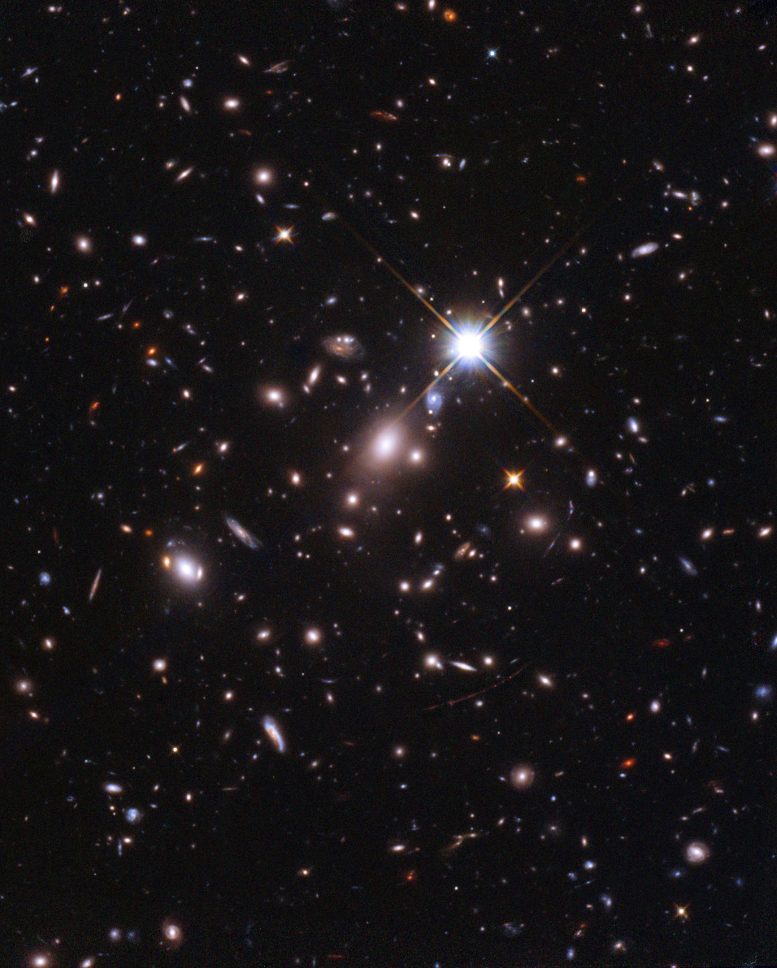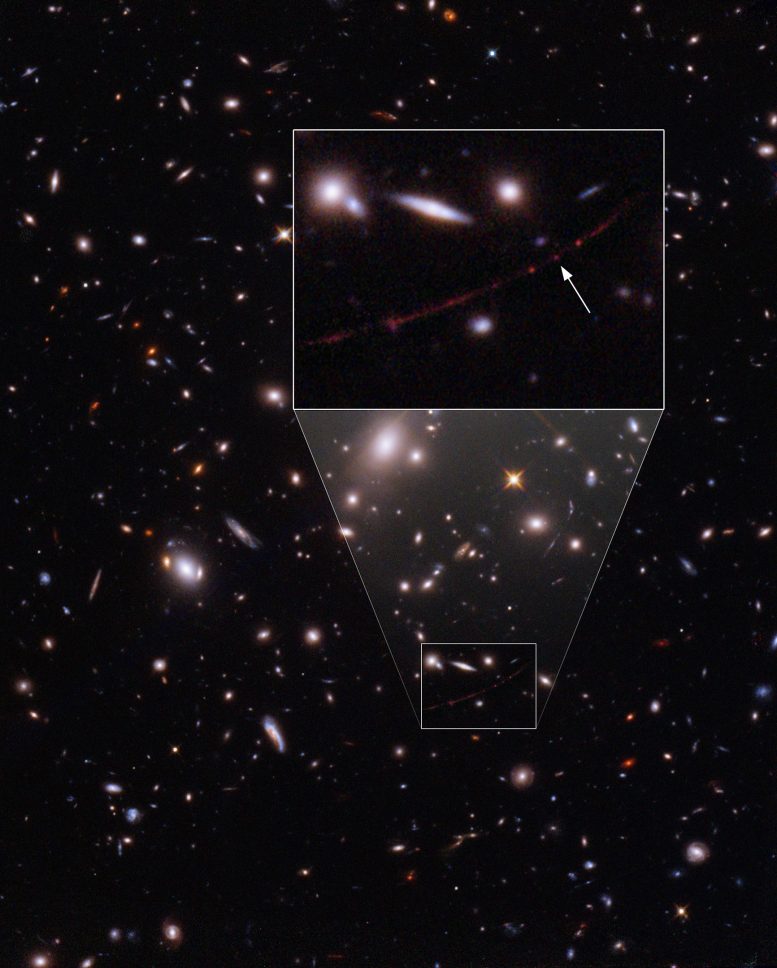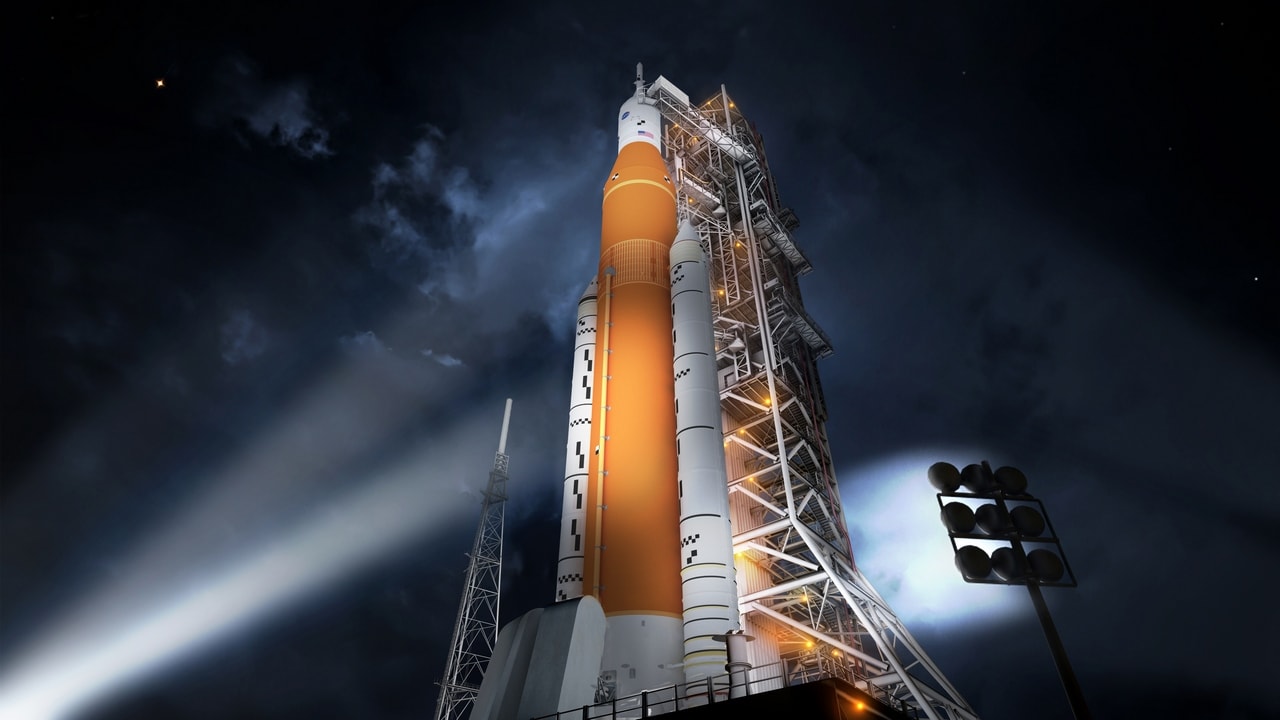
La galassia dell’arco dell’alba con la stella con lente Earendel Credito: Scienza: NASA, ESA, Brian Welch (JHU), Dan Coe (STScI), Elaborazione delle immagini: NASA, ESA, Alyssa Pagan (STScI)
Il[{” attribute=””>NASA/ESA Hubble Space Telescope has established an extraordinary new benchmark: detecting the light of a star that existed within the first billion years after the Universe’s birth in the Big Bang (at a redshift of 6.2) — the most distant individual star ever seen. This sets up a major target for the NASA/ESA/CSA James Webb Space Telescope in its first year
This find is a huge leap back in time compared to the previous single-star record holder; detected by Hubble in 2018. That star existed when the universe was about 4 billion years old, or 30 percent of its current age, at a time that astronomers refer to as “redshift 1.5.” Scientists use the word “redshift” because as the Universe expands, light from distant objects is stretched or “shifted” to longer, redder wavelengths as it travels toward us.
But the newly detected star is so far away that its light has taken 12.9 billion years to reach Earth, appearing to us as it did when the universe was only 7 percent of its current age, at redshift 6.2. The smallest objects previously seen at such a great distance are clusters of stars, embedded inside early galaxies.

The star nicknamed Earendel (indicated with arrow) is positioned along a ripple in spacetime that gives it extreme magnification, allowing it to emerge into view from its host galaxy, which appears as a red smear across the sky. The whole scene is viewed through the distorted lens created by a massive galaxy cluster in the intervening space, which allows the galaxy’s features to be seen, but also warps their appearance—an effect astronomers call gravitational lensing. The red dots on either side of Earendel are one star cluster that is mirrored on either side of the ripple, a result of the gravitational lensing distortion. The entire galaxy, called the Sunrise Arc, appears three times, and knots along its length are more mirrored star clusters. Earendel’s unique position right along the line of most extreme magnification allows it to be detected, even though it is not a cluster. Credit: Science: NASA, ESA, Brian Welch (JHU), Dan Coe (STScI), Image Processing: NASA, ESA, Alyssa Pagan (STScI)
Thanks to the rare alignment with the magnifying galaxy cluster, the star Earendel appears directly on, or extremely close to, a ripple in the fabric of space. This ripple, which is known in optics as a “caustic,” provides maximum magnification and brightening. The effect is analogous to the rippled surface of a swimming pool creating patterns of bright light on the bottom of the pool on a sunny day. The ripples on the surface act as lenses and focus sunlight to maximum brightness on the pool floor.
This caustic causes the star Earendel to pop out from the general glow of its home galaxy. Its brightness is magnified a thousandfold or more. At this point astronomers are not able to determine whether Earendel is a binary star, but most massive stars do have at least one smaller companion star.
Astronomers expect that Earendel will remain highly magnified for years to come. It will be observed by the NASA/ESA/CSA James Webb Space Telescope later in 2022. Webb’s high sensitivity to infrared light is needed to learn more about Earendel, because its light is stretched (redshifted) to longer infrared wavelengths by the expansion of the Universe.

“Fan della TV. Risolutore di problemi malvagi. Amante del cibo appassionato. Explorer. Specialista di Internet. Imprenditore dilettante. Fanatico dell’alcol.”

/https://www.thestar.com/content/dam/localcommunities/milton_canadian_champion/news/2021/08/20/mosquitoes-in-milton-test-positive-for-west-nile-virus/10458454_West+Nile+found+in+Lindsay.JPG)

